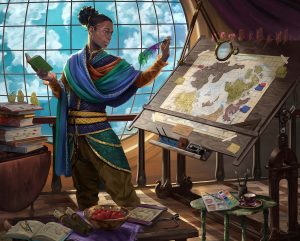
It’s time again for the Kobold Press advice column, Pack Tactics!
Our roundtable experts this month are Ben Eastman, Basheer Ghouse, Sebastian Rombach, and Mike Welham.
You might recognize some of these names from Kobold Press products such as the updated Tome of Beasts 1 and Campaign Builder: Cities and Towns. And as contributors to this very blog!
Whatever questions you have about running a game, handling tricky metagame traps, and ruling edge cases, they’ve got an answer. Sometimes several!
Long-Time Player, New GM asks . . .
I have an idea for a campaign for a certain system but am unsure how to advertise it and get people hooked. What do you do for that? For context I am pretty new to GMing but have played plenty of games.
Basheer: The way you phrase this question, it sounds like you don’t have a regular group. Maybe you’re running a game at a store or at a regular game day instead of at somebody’s house.
I’d say the first thing I’d want to know to answer your question is, what compels you about the idea?
Ben: If I have to sell a new system, I definitely need to explain to the players what makes me excited about the game. What’s the mechanic that’s cool? What’s the adventure that’s cool? What’s the angle you have for the game?
Players will understand and gravitate towards the excitement. But if you come with a simple, “Well maybe let’s see if Pathfinder 2e is fun. . . .”, then I don’t think players will get into the game.
Sebastian: Right. You gotta meet them on their level if you want them to buy in to what you’re selling at the game table. No one’s opened up a GURPS Asparagus supplement at the table to oohs and ahhs and “Yeah! Let’s play with that one!” But if someone said to me “hey, wanna play Veggie Tales D&D?” I’d would totally be down for at least a one-shot.
Mike: Do not tease me with a GURPS Asparagus supplement!
Sebastian: You wanna play?!
Mike: Of course!
Ben: There’s for sure a youth group that’s playing Veggie Tales D&D.
Sebastian: No, see, but that’s where it’s at. When I sell my players on a new campaign that I want to run, I try to present it with popular references they understand and—mostly importantly—like.
When I closed out our previous campaign that had grown stale to begin a run-through of Scarlet Citadel, I already knew that I wanted to make some changes to the adventure as published.
I wanted to make changes that excited me because of the media that I had been enjoying at the time. I made my elevator pitch to the group: “I want to run a megadungeon and town simulator campaign. Think Darkest Dungeon meets Stardew Valley.”
That painted a familiar and exciting picture for the group (who I knew love those games), and it opened the door to get them hooked.
Mike: I’d go with Sebastian’s idea and include popular media relevant to the group. Although I realize saying, “If you like Buffy the Vampire Slayer, then you’ll probably like Monster of the Week,” will impact groups differently.
I’d also key in on their experience as a player. You could say, “This is a game that gets me excited as a player, and I’d love to GM it for you.”
Basheer: Generally speaking, if you open with “this is why I think this campaign will be incredibly cool” you’ll get folks interested in it swinging by.
But if you know your audience you can target it a lot more effectively. I can start any campaign pitch to my friends with, “So, this is the horrific political incident the concept resembles,” and everyone will be on board and I’ll likely have to turn away some players.
But that’s because we’re all weirdos who recommend each other depressing history books and biographies for fun.
Ben: So, like, Veggie Tales during the Maccabean Revolt.
Basheer: Now I’m in too!
What Do You Think?
How would you handle this situation? Let us know in the comments!
Do you have a question for the pack? Let our pros weigh in on your tough questions. Then check back first Friday of each month for more Pack Tactics!
